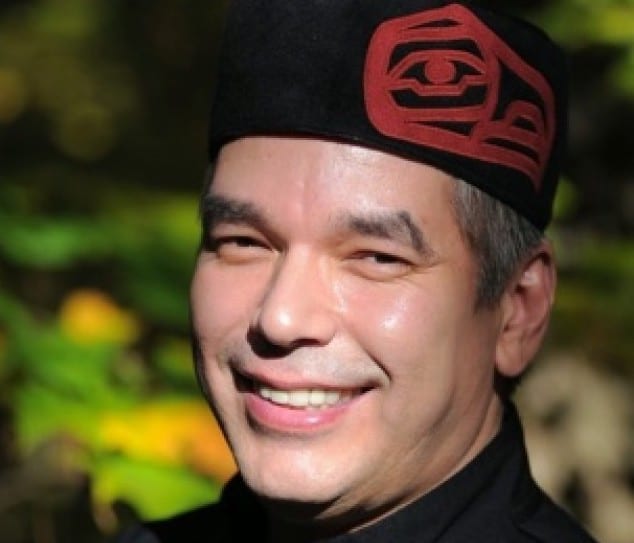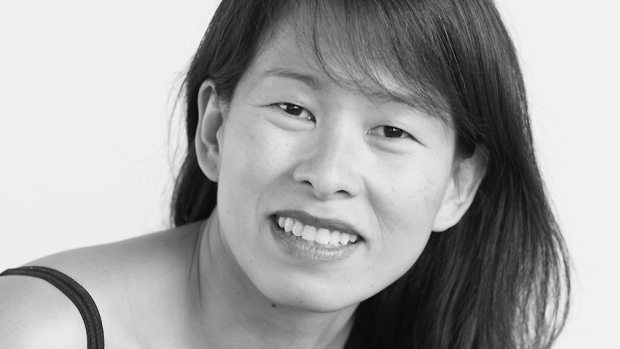
A Taste of Haida Gwaii (Michelle Furbacher)
Canadian food writing has come into its own, despite the lack of a homegrown Anthony Bourdain or Ruth Reichl. Below, three authors share their insights into the country’s culinary prose. The panelists:
- Jonah Campbell is a Montreal writer and researcher, whose work has appeared in the National Post, Harper’s, CULT Mtl, and Vice. He has authored two essay collections for Invisible Publishing, 2011’s Food and Trembling, and Eaten Back To Life, released in May. He also pours wine.
- Lindy Mechefske is the Taste Canada Award–winning author of Sir John’s Table: The Culinary Life and Times of Canada’s First Prime Minister (Goose Lane Editions) and A Taste of Wintergreen (Wintergreen Studios Press). She writes for a variety of publications and is the food columnist for The Kingston Whig-Standard.
- Simon Thibault is a Halifax journalist and producer whose work has appeared in The Globe and Mail, CBC Radio, among other places. He is a programmer at the Devour! Food Film Fest, in Wolfville, Nova Scotia. His first book, Pantry and Palate: Remembering and Rediscovering Acadian Food, is out in June with Nimbus Publishing.

Feast
Has the influx of celebrity cookbooks and star chefs affected Canadian food writing?
Lindy Mechefske: I interviewed a chef for a piece for The Kingston Whig-Standard – he is the closest thing we have to a celebrity chef here. He said, “I just want everyone to turn off their televisions and get into the kitchen. I think we have celebrity chefs to blame for the elevation of ridiculousness in cooking. Just go in the kitchen and break some eggs and get out some vegetables!” I really loved that. I think celebrity chefs have taken us a long way away from that idea. The only good part is that maybe food is finally taking its rightful place in society.
Simon Thibault: The other day I was in the Halifax Public Library, which has a very extensive cookbook collection. When you walk in, there is a selection of new or theme-based cookbooks. One of the titles they had out was by a star from The Real Housewives of New Jersey. Now I’m thinking, “What the fuck do I care about this women’s work?” Yet I don’t think it has any impact on food writing. It might have an influence on celebrity culture. It might possibly have an influence on someone who wants to learn to cook certain things. I really don’t think celebrity, in the terms of non-food based celebrities, has any impact on food writing, with the possible exception of Gwyneth Paltrow.
But how do we get people into kitchens? It’s getting people to feel less intimidated by turning on a stove, by trying something new. Just in writing my own book, I’m thinking about how I am going to get someone who has no cultural context to cook from this.
Jonah Campbell: I think there is a tendency to overestimate the influence of things on the culture. I don’t think we really have enough perspective to worry about whether celebrity cookbooks are impacting the culture of food writing or the culinary habits of readers and regular people. On one hand, maybe what is going to take to get someone into the kitchen and cooking is their identification with Real Housewives. Maybe it is someone being interested in what Gwyneth Paltrow has to say. This could make somebody, who normally isn’t even really going to look at the cookbook section of a bookstore, pick something up. Good or bad? I don’t know, but I think there is a long history of celebrity cookbooks in various forms. You could make an argument that some of the first cookbooks written by chefs of kings and royalty are effectively celebrity cookbooks.

Pantry and Palate (Noah Fecks)
How has Canadian food writing evolved?
Thibault: I may be a cis-gendered white guy who is queer and lives in Nova Scotia, but the biggest section of my cookery books are Chinese, Japanese, and Southeast Asian, most of which have been written by white women. If someone asks me to write about something, and if I don’t already have a personal connection to it, I will probably say no. Unless I feel that I can do it in a way that is respectful.
One of the people whose work I admire the most is Naomi Duguid. Naomi and her ex-husband, Jeff Allford, made an entire career talking about “other people’s food.” They wrote Hot, Sour, Salty, Sweet, which is about Southeast Asia, and Beyond the Great Wall, which is about China. Their books are like, “Here are these people, here are their food ways, here is their language, here is their history, and then, here is how people cook.” But they’re not exoticizing.
Campbell: I am really glad that you take a pass on stories. It’s not that you can’t write about them, or couldn’t write with insight, but at a certain point we need to recognize the importance of prioritizing the voices of the people whose traditions are being engaged with. Allow those people to speak, as opposed to speaking for, or speaking in lieu of. The lesson that modern anthropologists are always taking to heart is that knowledge of another culture is a form of power or authority, whether or not it’s intended.
Mechefske: I oscillate in my column between writing about other people, and then just writing about food from my own perspective. But when I am writing about other people, I often think, “What am I actually entitled to write about?” I am definitely not writing in the “I” voice. I think it comes down to knowledge, research, and respect, and being a non-partial observer.
What sets apart Canadian food writing?
Mechefske: I feel like it is a growing field. There are more people entering, and there is more focus. Publishers are interested, people are interested. Feast (Appetite), by Lindsay Anderson and Dana Vanveller, is such a great example. A 35,000-kilometre road trip across Canada piques Canadian’s interests, and if it is about food, it is all the more relevant.
People ask me frequently, “What Canadian food writers can I read?” I tell them to start with Susan Musgrave’s A Taste of Haida Gwaii (Whitecap Books). I think that is the most beautiful food book to come out of Canada in the last few years.
Thibault: It is very difficult and shortsighted to look at Canadian food and food writing strictly from the point of view of “This is English, this is Irish, this is Scottish … South Asian, Caribbean.” Source is important, but what is more important is the dissemination through generations. Maybe my view is macroscopic, because I live in Nova Scotia, where food cultures – other than the overwhelmingly white culture – tend to blend very quickly and easily.
A perfect example is a recipe of my grandmother’s that I included in my book. I realized pretty quickly I could find the exact same recipe in books of African-Nova Scotian cookery and in the books of Loyalists. Being post-colonial also means that we are post-national. It is very difficult to have culinary nationalism in a country like Canada or in the 21st century. That is the difficulty and the beauty – we are all of these things.
Campbell: If there was not a border roughly along the 49th parallel, and someone said, “Do you think there is something really distinct about the food writing of the top third of North America?” would we be able to craft an intelligible response?
Mechefske: We can’t point to too many chefs in Canada everybody knows that has a cookbook we are all reading, which is so different than American culture. Even in Britain, with Jamie Oliver and Nigella Lawson, we don’t have that here. It is almost the “lack of” that defines our food writing. It’s more accessible, egalitarian – like Canada. When a poet like Susan Musgrave can have the top-selling cookbook, and a pair of food bloggers who don’t have another book out strike gold this year with Feast, that is so Canadian.
Food-writing reading lists:
Lindy Mechefske
The Guardian’s Food and Drink section: I’m a big fan of Rachel Roddy.
Websites: Food Tank Food52, and Modern Farmer
My own glorious cookbook collection which spans from a 1912 copy of Mrs. Beeton’s Cookery Book to The Harrowsmith Cookbooks Vol 1–3, to contemporary books including Susan Musgrave’s A Taste of Haida Gwaii and Anderson and VanVeller’s Feast.
Simon Thibault
Out Of Old Nova Scotia Kitchens, Marie Nightingale
Nightingale’s book was ahead of its time. Part recipe collection, part cultural analysis, the book examines the foodways of its residents, and how they created the cuisine of the place. Nightingale worked tirelessly on the book, filled with tiny tidbits and culinary anecdotes that tease the appetite, while the recipes therein ensure that people continue to cook from it.
Consider The Fork: A History of How We Cook and Eat, Bee Wilson
This British journalist and food writer looks at how the changes in our kitchens have changed us as a society. Wilson helps remove the historical and cultural blinders we eat with, reminding the reader that forks were once considered barbaric, chopsticks are arguably perfect dining implements, and that the spork is tedious at best.
Hot, Sour, Salty, Sweet: A Culinary Journey throughout South East Asia, Jeffrey Alford and Naomi Duguid
Alford and Duguid wrote a series of award-winning books, but this is the title that made me want to cook, and made me want to write about food. Here was a book that spoke of cultures, not at them, and proudly made room for the food to speak for itself in its clear recipes. (Full disclosure: Duguid wrote the foreword to my book, Pantry and Palate, but her work has inspired me for years, and continues to.)
Garlic and Sapphires, Ruth Reichl
Reichl proves why she was such a successful food critic: she was honest yet enthusiastic, funny without mocking anyone, and most of all, her descriptions of food are beyond stunning. For food writers today, reading about the halcyon days of large expense accounts, makes the book worth the read alone.



 Contact us via email
Contact us via email

